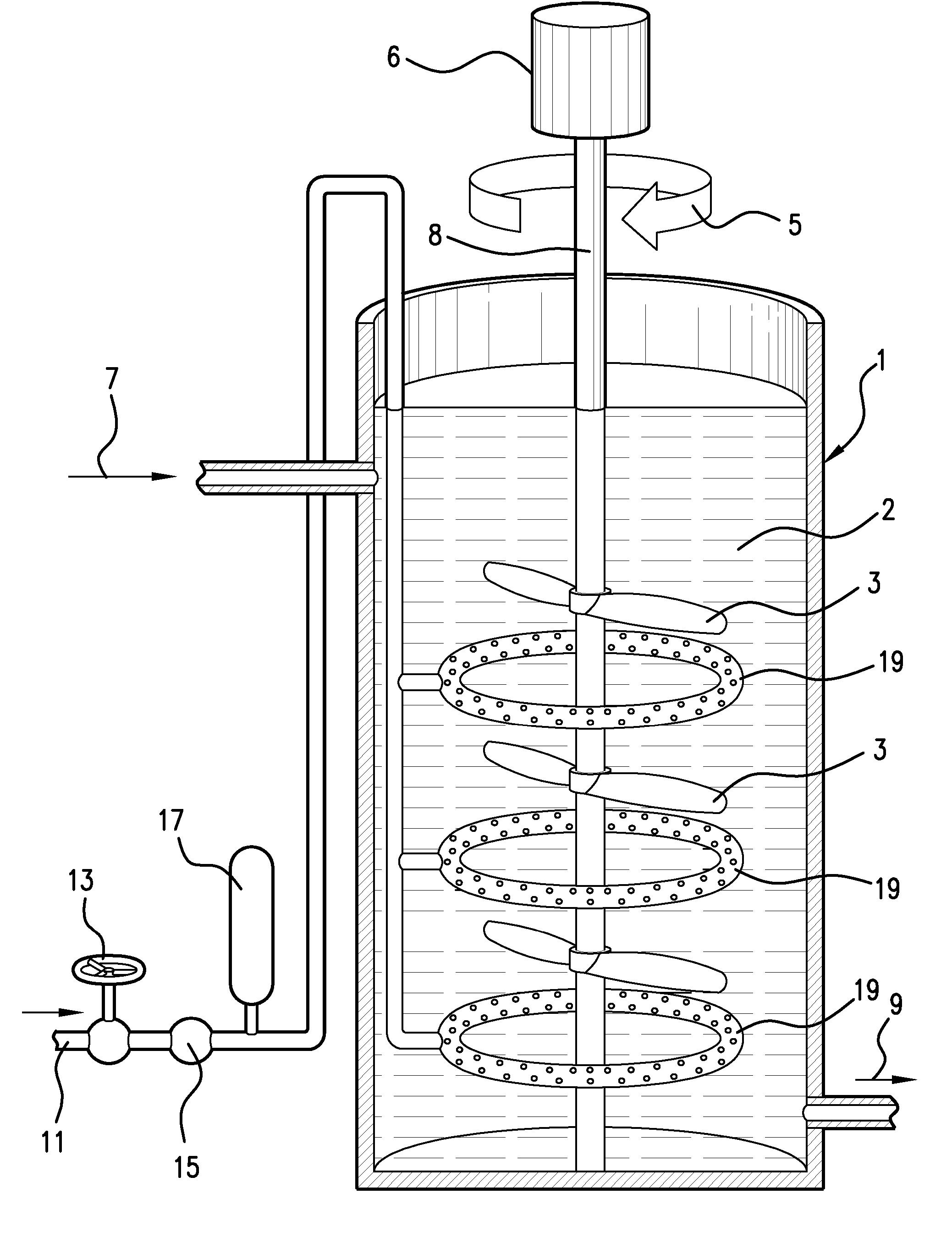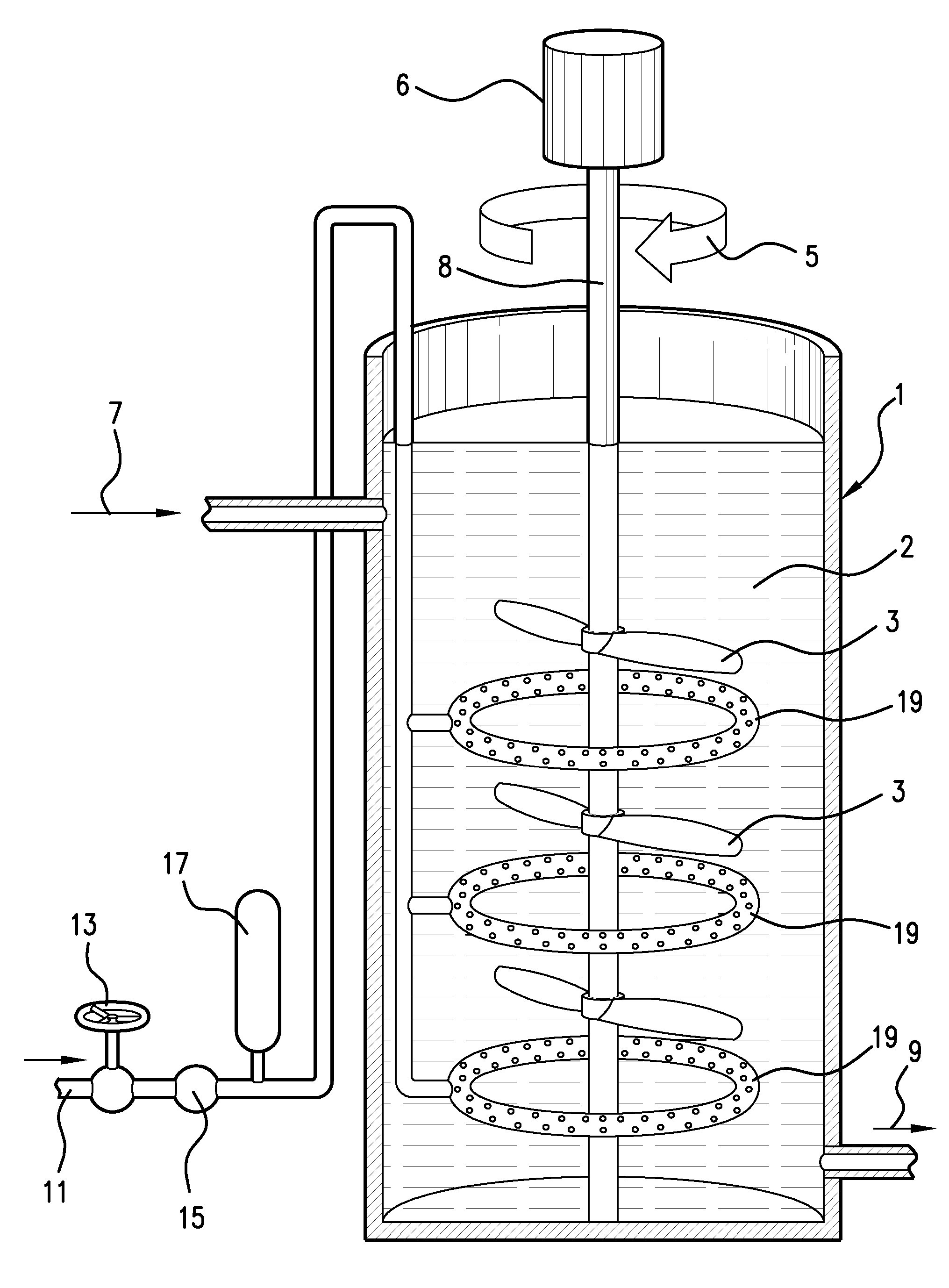Use of pure oxygen in viscous fermentation processes
- Summary
- Abstract
- Description
- Claims
- Application Information
AI Technical Summary
Benefits of technology
Problems solved by technology
Method used
Image
Examples
Embodiment Construction
[0023] The rate of oxygen transfer into a fermentation medium can be described by the following equation:
OTR=dCL / dt=KLa(C*−CL)
where [0024] OTR=oxygen transfer rate, [0025] CL=concentration of dissolved oxygen in the fermentation broth, [0026] C*=dissolved oxygen concentration at saturation, and [0027] KLa=mass transfer coefficient times the gas-liquid interface area per liquid volume, also known as the volumetric transfer coefficient.
[0028] The quantity C* is thus a value of maximum concentration, and is a constant. The quantity (C*−CL) is known as the concentration gradient, i.e. the difference between actual concentration and maximum possible concentration. Thus, the oxygen transfer rate is proportional to concentration gradient.
[0029] The coefficient KLa varies with the geometry of the fermenter, with the rotation speed of the agitator, and with the viscosity of the medium. Information about this coefficient is given in Y. M. Lo et al, Bioprocess and Bio Systems Engineering ...
PUM
| Property | Measurement | Unit |
|---|---|---|
| Diameter | aaaaa | aaaaa |
| Viscosity | aaaaa | aaaaa |
| Height | aaaaa | aaaaa |
Abstract
Description
Claims
Application Information
 Login to View More
Login to View More - R&D
- Intellectual Property
- Life Sciences
- Materials
- Tech Scout
- Unparalleled Data Quality
- Higher Quality Content
- 60% Fewer Hallucinations
Browse by: Latest US Patents, China's latest patents, Technical Efficacy Thesaurus, Application Domain, Technology Topic, Popular Technical Reports.
© 2025 PatSnap. All rights reserved.Legal|Privacy policy|Modern Slavery Act Transparency Statement|Sitemap|About US| Contact US: help@patsnap.com


